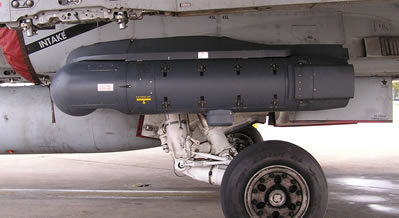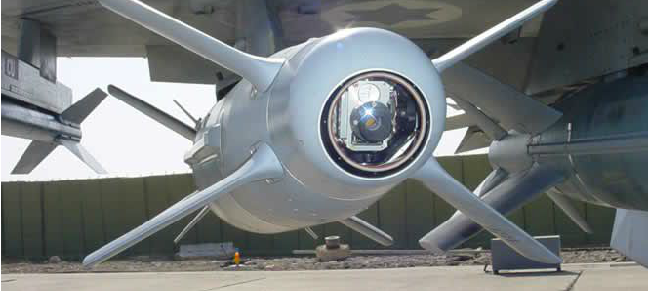Israel has conducted an airstrike against the heart (or, as we’ll see, perhaps it’s better described as the lungs) of the Assad regime in Syria. On Sunday, news agencies carried statements from Syrian State TV, SANAA, that earlier that day Israeli jets entered Syrian airspace and struck a facility near Damascus International Airport. A second target was also hit, according to SANAA, near the border between Syria and Lebanon. Jerusalem Post reports:
According to reports by the Syrian opposition cited by Channel 2, ten explosions were heard following the attack on military targets near Damascus. It is likely that some of them were of the attack itself, and others were secondary explosions. Various reports listed a total of four aircraft sorties.
Syrian state television said on Sunday that Israeli jets had bombed areas near Damascus international airport and in the town of Dimas, near the border with Lebanon.
While the Israeli military has not given any comment, the reports were echoed by Syrian opposition groups. This video, purportedly showing the explosion, was tweeted by the Local Coordination Committees of Syria, a proven and reliable opposition reporting group which maintains that it confirms its news before posting. While it has not been independently confirmed, the video has not been successfully challenged by those looking into its authenticity.
There is additional corroborating evidence that suggests that this strike was carried out by the Israeli military. A video posted to YouTube claims to show the wreckage of an Israeli drone shot down southwest of Damascus:
At one point in the video, a panel is picked up by one of the Syrians.

The panel reads:
Magal is an Israeli Defense Contractor which makes cameras and sophisticated mounting for them. The aircraft logo in the top left suggests that whatever this “camera,” as it is described by the Syrians in the video, is, it was made by Rafael Advanced Defense Systems. It’s possible that an aerial surveillance system made by Rafael would use Magal cameras. In fact, while we have not definitively identified the wreckage, what we see burning in this video may not be a drone at all but an under-wing surveillance pod like the “Litening” or “Reccelite” pod systems.
Here is the Reccelite pod:

Another picture of an under-wing surveillance system sold by Rafael shows how the cameras are mounted in the nose:

These surveillance systems can be jettisoned by aircraft as they flee an area where they are being hunted by enemy radar.
There is evidence that Israel bombed Syria, but now we have to ask what they hit.
What Was Israel’s Target?
DPA and Haaretz report that the likely target of the airstrike were Iranian missiles destined for Lebanon:
The Damascus airport warehouses reportedly targeted by the Israeli air strikes on Sunday held Iranian missile systems destined for the Lebanese Shiite movement Hezbollah, DPA reported, quoting a Lebanese security source.
Al-Arabiya reported that two Hezbollah militants, one of whom was high-ranking, were killed in the strike.
A Syrian military source confirmed that the hangars at Damascus International Airport contained missiles but gave no details about their origin or destination..
The Lebanese official, who requested anonymity because he was not authorized to speak to the media, said a Hezbollah convoy heading to Lebanon had been hit in another set of strikes at Dimas, approximately half-way between Damascus and the Lebanese border.
The strikes hit an air base at Dimas where advanced Iranian drones were stationed along with Syrian troops and Hezbollah forces, the Syrian official said.
Israel has complained for years that Assad has been supplying Hezbollah with rockets in return for the loyalty of Hezbollah fighters, who have become a key asset in Assad’s attempts to retain control of his own country. A new UN report does suggest that Israel is working with the Syrian rebels
to find medical treatment for those who need it, sparking whispers that
Israel may be working with the rebels on other matters, including
obtaining intelligence. This should not be a surprise since multiple storehouses and convoys have been targeted by Israel throughout the last few years. It’s a reasonable theory that Israel was targeting more Hezbollah-rocket related targets in this strike.
However, in at least one of Israel’s past bombing raids in Syria, it wasn’t just Hezbollah’s rockets which were the target. On May 5th, 2013, Storyful’s Félim McMahon and I were analyzing two different airstrikes. The first had apparently struck a military convoy near the Lebanese border — matching a pattern which we had already seen in previous strikes. What was different was that, at the same time, Israel conducted truly massive strikes against Mt. Qasioun, a high mountain that towers over the capital city, Damascus. The target was not a weapons stockpile or a research facility, but the headquarters of the 104th Brigade, an elite Republican Guard Unit, and a base belonging to the 4th Motorized Armored Division, a unit led by Bashar al Assad’s own brother, Maher. These bases, situated just a ridge away from where Syria’s president sleeps, targeted the key defenses keeping Free Syrian rebels from overrunning the city and overthrowing the regime.
Israel wasn’t just destroying a threat, they were sending a message. It is therefore possible that today’s target, at least the one in Damascus, is not directly related to shipments of rockets to Hezbollah.
This is where the location of the airstrikes plays a role. The airstrike on the border might have targeted rockets or fighters associated with Hezbollah, but why would Israel attack Damascus International Airport?
The airport plays a major role in keeping the Assad regime alive. If Damascus, the capital, is the heart of the regime, then the airport performs the role of its lungs. It is through shipments of men and material from the outside world (principally Iran) to this airport that Assad is receiving important equipment, supplies, and command & control assistance, breathing air into what would otherwise be a dying regime. In a September 2013 article on Qassem Suleimani, the Iranian ‘Quds Force’ military commander who is now leading Assad’s war, Dexter Filkins explained that Damascus airport plays a key role in Iran’s direct support to Assad:
Late last year [2012], Western officials began to notice a sharp increase in Iranian supply flights into the Damascus airport. Instead of a handful a week, planes were coming every day, carrying weapons and ammunition—“tons of it,” the Middle Eastern security official told me—along with officers from the Quds Force. According to American officials, the officers coordinated attacks, trained militias, and set up an elaborate system to monitor rebel communications. They also forced the various branches of Assad’s security services—designed to spy on one another—to work together. The Middle Eastern security official said that the number of Quds Force operatives, along with the Iraqi Shiite militiamen they brought with them, reached into the thousands. “They’re spread out across the entire country,” he told me.
A key part of Suleimani’s strategy has been the use Hezbollah fighters to add much-needed shock troops to key areas in which the regime was in danger of losing control, especially from Homs to southern Damascus. Assad’s support for Hezbollah did not start in 2011 with Arab Spring, of course, but those fighters continue to be loyal to Assad and Iran in part because Assad and Iran continue to feed weapons, most importantly rockets, to be used against Israel.
Were Advanced Russian Anti-Aircraft Missiles The Target?
But there is another theory about what Israel hit. News agencies across the globe have speculated today that Israel was destroying components of the S-300, an advanced Russian anti-aircraft system. Here is an excerpt from McClatchy‘s report on the matter which indicates that an S-300 may have been the target of the strikes (though no evidence for this claim is provided):
The attack would be consistent with repeated Israeli pledges that it would not allow Syria to deploy the S-300 anti-aircraft missile system and raised the question of whether Russia had sent new components of the system to Syria, perhaps in violation of an August pledge not to complete delivery under terms of a United Nations arms embargo…
The Russian sale of the S-300 anti-aircraft system to Syria has long been controversial. Israel first objected to the sale when it was agreed to in 2007, fearing that the system, with a range of nearly 50 miles, would allow the Syrians to down Israeli aircraft while still in Israeli airspace. Considered one of the most sophisticated anti-aircraft defense systems in the world, it is said to be able to track as many as 100 targets simultaneously.
An agreement to sell the system to Iran collapsed under international pressure in 2010.
Russia and Syria have both acknowledged that some S-300 components have been delivered. But Russia said in August that it would suspend delivery of the complete system due to the arms sale embargo the U.N. has placed on Syria. While Russia has used its veto in the U.N. Security Council to block a complete blockade on arms sales to Syria, it acknowledged that other sanctions covered the S-300, which would represent a massive upgrade in Syria’s air defense capabilities.
An Aug 11, 2014, report by Russia’s Interfax-AVN military news agency said the decision to cancel further deliveries of the S-300 system had been made by Russia’s “political leadership.” It quoted Konstantin Buryulin, the deputy director of the Federal Service for Military-Technical Cooperation, as saying that already delivered components “will be disposed of” if an “appropriate application” is not found. IHS Janes Defence Weekly first reported the statement on Aug 14, 2014.
The S-300 is an advanced anti-aircraft system, one which even poses a threat to countries like Israel and the United States. Many believe that Israel will not allow the S-300 in Syria.
In January, there were reports that Israel had bombed the port city of Lattakia, a location often used by Russian ships and a city just an hour north of where Russia has a large naval base. It is through this region that Russia has been delivering supplies, particularly repaired helicopters and aircraft parts, which have kept Assad’s aircraft flying — and by extension, Assad’s head firmly attached to his neck, since Assad’s air force is one of the few advantages he’s been able to leverage in order to stay in power. If the S-300 were to arrive in Syria, it would likely be shipped to Lattakia or Tartus and moved on the ground.
Since Israel has not made a statement (they rarely do), as of right now there is simply no supporting evidence that this airstrike targeted S-300 components.
Media Missing The Point — As Usual
There is an unhealthy fascination in the media about the S-300. To be clear, these anti-aircraft systems would pose a serious threat to not only Israeli aircraft but also NATO aircraft patrolling Turkey’s border with Syria, and US aircraft striking ISIS. But the S-300 has become yet another “red line” in Syria. Yes, chemical weapons are horrible. The August 2013 chemical attack likely killed approximately 1400 people. But perhaps more than 200,000 people have been killed by other means, and a huge percentage of civilians have been killed by Assad’s bombing campaigns, which utilize aircraft manufactured, serviced, repaired, maintained, and equipped by the Russian military. Yes, the S-300 is a threat, but not a single Israeli jet has been shot down in recent memory. Hezbollah’s rockets, however, continue to plague Israelis (and for critics of Israel’s foreign policy, they also draw the fire from Israel’s air force, which also kills civilians).
Once again, Russia is being treated like a legitimate partner in the world, which is why Western officials are upset at the idea that Russia may deliver the S-300. They should not be surprised or upset, this is what they should come to expect from Russia.
The reality is that without support from Russia and Iran, the Assad regime would be gone. Regardless of whether Israel is bombing Iranian rockets headed toward Lebanon or Russian anti-aircraft weapons, it’s Russia that is working to actively destabilize the region by fueling this conflict.